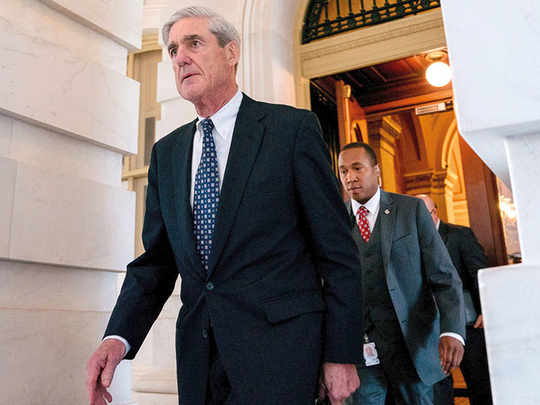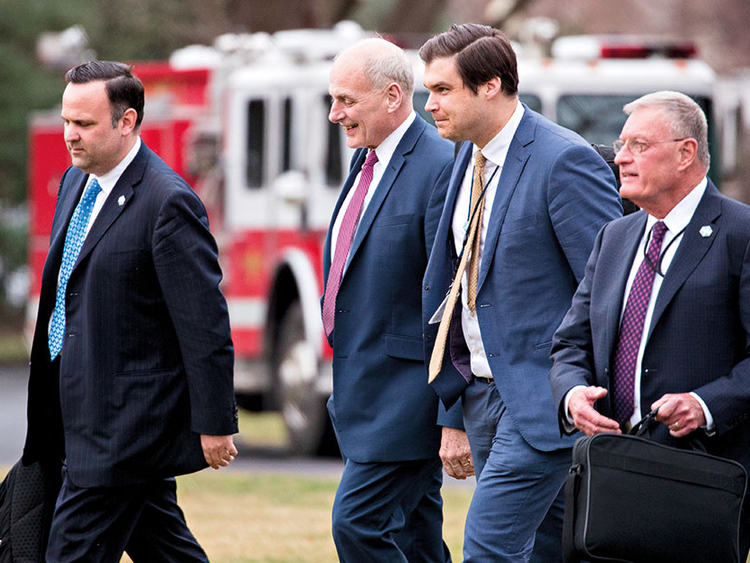
Washington: In September, as the first detailed evidence surfaced of Russia’s hijacking of social media in the 2016 election, Irina V. Kaverzina, one of about 80 Russians working on the project in St Petersburg, emailed a family member with some news.
“We had a slight crisis here at work: the FBI busted our activity [not a joke],” she wrote of the project in Russia. “So, I got preoccupied with covering tracks together with the colleagues.” She added, “I created all these pictures and posts, and the Americans believed that it was written by their people.”
A 37-page indictment, handed up Friday by a Washington grand jury and charging Kaverzina and 12 other people with an elaborate conspiracy, showed that she and her colleagues did not, in fact, hide their tracks so well from US investigators.
The charges, brought by Robert S. Mueller III, the special counsel, introduced hard facts to a polarised political debate over Russia’s intervention in American democracy, while not yet implicating President Donald Trump or his associates.
The indictment presented in astonishing detail a carefully planned, three-year Russian scheme to incite political discord in the United States, damage Hillary Clinton’s presidential campaign and later bolster the candidacy of Trump, along with those of Bernie Sanders and Jill Stein. The precise description of the operation suggested that FBI investigators had intercepted communications, found a cooperating insider or both.
Spread distrust
The Russians overseeing the operation, which they named the Translator Project, had a goal to “spread distrust toward the candidates and the political system in general.” They used a cluster of companies linked to one called the Internet Research Agency, and called their campaign “information warfare.”
The field research to guide the attack appears to have begun in earnest in June 2014. Two Russian women, Alexandra Y. Krylova and Anna V. Bogacheva, obtained visas for what turned out to be a three-week reconnaissance tour of the United States, including to key electoral states like Colorado, Michigan, Nevada and New Mexico. The visa application of a third Russian, Robert S. Bovda, was rejected.
The two women bought cameras, SIM cards and disposable cell phones for the trip and devised “evacuation scenarios” in case their real purpose was detected. In all, they visited nine states — California, Illinois, Louisiana, New York and Texas, in addition to the others — “to gather intelligence” on American politics, the indictment says. Krylova sent a report about their findings to one of her bosses in St Petersburg.
Another Russian operative visited Atlanta in November 2014 on a similar mission, the indictment says. It does not name that operative, a possible indication that he or she is cooperating with the investigation, legal experts said.
The operation also included the creation of hundreds of email, PayPal and bank accounts and even fraudulent driver’s licences issued to fictitious Americans. The Russians also used the identities of real Americans from stolen Social Security numbers.
At the height of the 2016 campaign, the effort employed more than 80 people, who used secure virtual private network connections to computer servers leased in the United States to hide the fact that they were in Russia. From there, they posed as American activists, emailing, advising and making payments to real Americans who were duped into believing they were part of the same cause.
The playing field was mainly social media, where the Russians splashed catchy memes and hashtags. Facebook has estimated that the fraudulent Russian posts reached 126 million Americans on its platforms alone.
The Russian operatives contacted, among others, a real Texas activist who, evidently assuming they were Americans, advised them to focus on “purple states like Colorado, Virginia & Florida.” After that, FBI agents found that the phrase “purple states” became a mantra for the Russian operation.
Clinton Watts, a former FBI agent who has tracked the Russian campaign closely, said he had no doubt that President Vladimir Putin of Russia was behind the effort, which was carried out by companies controlled by his friend and ally, Yevgeny V. Prigozhin. But he noted that the trolls employed by Prigozhin took elaborate steps to obscure their identities and locations and to avoid leaving government fingerprints.
Plausible deniability
“From the beginning, they built this so it could be plausibly denied,” Watts said. Putin has repeatedly denied any government role in hacking and disinformation aimed at the United States, while coyly allowing that patriotic Russians may have carried out such attacks on their own.
Andrew S. Weiss, a Russia specialist at the Carnegie Endowment for International Peace, called the reported origin of the effort in April 2014 “crucially important.”
“That’s a little more than a month after the annexation of Crimea and the launch of Russia’s covert war in eastern Ukraine,” Weiss said. The resulting crisis “vaporised US-Russian relations overnight,” he said, setting off multiple Russian efforts “to undermine the United States, both in terms of our leading role in the world, but also via our own domestic political vulnerabilities.”
Weiss said the fact that private companies conducted the social media campaign simply made it cheaper and more difficult to trace.
By the beginning of 2016, the Russian strategy was in place, and the conspirators began their campaign to sow conflict. An internal message circulated through the Internet Research Agency telling operatives to post content online that focused on “politics in the USA.”
“Use any opportunity to criticise Hillary and the rest [except Sanders and Trump — we support them],” the message read.
The scope of the operation was sweeping. The Russians assumed their fake identifies to communicate with campaign volunteers for Trump and grass-roots groups supporting his candidacy. They bought pro-Trump and anti-Clinton political advertisements on Facebook and other social media. They used an Instagram account to try to suppress turnout of minority voters and campaign for Stein, the Green Party candidate.
Applying nearly two years’ worth of political research, the Russians used all these tactics to target voters in swing states, notably Florida, according to the indictment.
By summer 2016, the Russian operatives were mobilising efforts for coming ‘Florida Goes Trump’ rallies across the state, all planned for August 20. Using false identities, they contacted Trump campaign staff in Florida to offer their services. One operative sent a message to a campaign official saying the group Being Patriotic was organising a statewide rally “to support Mr Trump.”
After the rallies in Florida, the group applied similar tactics to organise rallies in Pennsylvania, New York and elsewhere.
Weeks before the election, the Russians ratcheted up social media activity aimed at dampening support for Clinton. In mid-October, Woke Blacks, an Instagram account run by the Internet Research Agency, carried the message “hatred for Trump is misleading the people and forcing Blacks to vote Killary. We cannot resort to the lesser of two devils. Then we’d surely be better off without voting AT ALL.”
Then, just days before Americans went to the polls, another Instagram account controlled by the Russians — called Blacktivist — urged its followers to “choose peace” and vote for Stein, who was expected to siphon support from Clinton’s campaign.
“Trust me,” the message read, “it’s not a wasted vote.”













